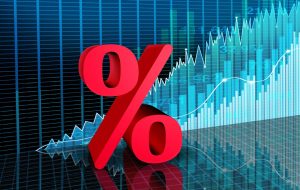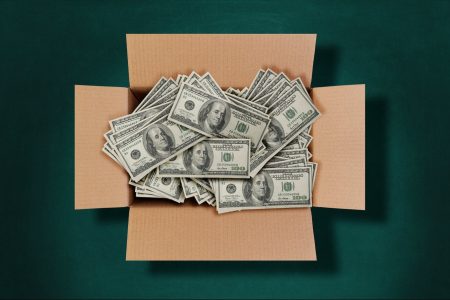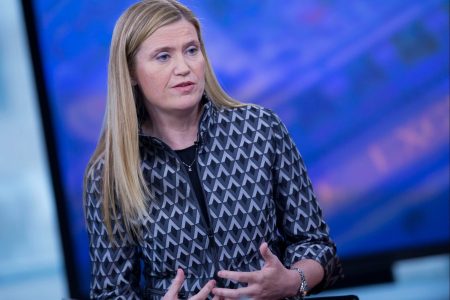The U.S. high inflation cycle is 29-months long and counting. The recent lower, yet still positive, 12-month inflation rate is a misleading indicator. It ignores the multiplier effect.
Inflation’s flip side is a currency’s purchasing power loss. So, it’s like compound interest in reverse, as each month’s positive inflation rate (no matter the size) worsens the accumulated purchasing power damage.
How large is the harm? Very. First, the “only 2%” inflation picture
A good way to see what’s happened is to examine the period before the inflation inflection point of March 2021. Back then, inflation was running at the Federal Reserve’s desired level of 2%. Here is the graph of the two primary CPI inflation measures, “All items” and “All items less food and energy.” The latter is less volatile primarily because energy prices can swing widely. Over the long run, they tend to end up at the same point.
That picture shows a steady, seemingly worry-free progression. Nevertheless, the steady erosion still produces a large hole over time. For example, that 5-year, 2-month increase compounded to almost 11%, meaning the purchasing power of one dollar dropped to about 90 cents. Therefore, just to maintain the same financial position, assets needed to return 11% (net of taxes and expenses) over the period. And just to maintain the same net income position required increasing it by 2% every year (net of taxes).
With the Fed keeping interest rates low and companies focused on controlling costs, those requirements were hard to meet for many people.
The real trouble: A high inflation cycle has taken hold
Note: The high inflation cycle was ignited by two Federal Reserve actions. Because of the Covid-19 U.S. economy shutdown, the Fed dropped interest rates back down to 0%. Also, it bought trillions of dollars of bonds to produce an enormous increase in the money supply. They thought they were filling an economic hole, but, instead, they were putting together the very conditions that produce high inflation. It burst forth in March 2021.
The inflation inflection point is clearly visible on this graph.
The Federal Reserve was surprised by the fast, large price jumps. Because they did not believe they had created the inflationary jump, they used some unusual conditions (e.g., shortages and shipping problems) to argue that the price jumps were just temporary. Then, as the months wore on, they changed the descriptor to “transitory,” whatever that means. Finally, they threw in the towel and said they would raise interest rates to fight the high inflation. Fed Chair Jerome Powell warned that there would be pain ahead.
The huge error is in thinking that interest rates could tame the beast. What was happening was the inflationary forces that created havoc from 1966 through 1982 were reappearing. Companies, in order to maintain earnings and profit margins made price-raising (inflation) strategies a top priority. Second, of course, was the need to control rising costs (someone else’s price). As a result, there was the building of employee distress (pent-up inflation). Salaries and wages always lag cost inflation, so the large consumer price gains made the income issue a serious concern. It’s why we are seeing the growing number of union contract negotiations as well as the attempts to unionize.
Now to the explanation of worsening inflation…
The key to understanding what is happening is to track the cumulative higher inflation from the March 2021 inflection point. As shown in the graph below, both CPI indexes are up about 15%. The fact that the volatile CPI-All Items index was up only 3+% over the last 12 months is irrelevant. That lower rate nevertheless increases the cumulative inflation even higher.
Remember that the media-focused 3.2% CPI-All Items 12-month rate is low due to the 12.5% decline in energy prices. That’s why the 4.7% rate for the CPI-All Items Less Food and Energy continues to be the more relevant fiat-money inflation measure. Additionally, that latest All-Items rate still carries the higher cumulative increase as shown in the graph: 16.1% vs 14.3% (6.4% vs 5.7% annualized).
Compare those rates to the Federal Reserve’s 2% goal (4.9% cumulative for 29 months). As I have discussed before, analyzing the CPI results in detail indicates a fiat money inflation rate of about 5% (12.5% cumulative). The higher actual CPI rates are due to some remaining demand/supply issues. As those get worked out, expect lower 12-month reports that could be taken as further improvement. Once they shake out, we still will be left with the damaging fiat-money inflation that has yet to be dealt with.
The bottom line: The Federal Reserve talks, but fails to fully explain or act
For the Fed to kill the high inflation cycle it created, it needs to raise interest rates higher than the inflation rate. Plus, it needs to reverse its enormous, uncorrected Fed Covid-19 action: The money created by the Fed’s 2020-2021 $trillions of long-term bond purchases. The Fed has said it is dealing with the issue, but it is not. It has not sold the bonds because they were bought at very low yields (much higher prices) and the unrealized losses (not reported until the bonds are sold), are enormous. This is the same problem that many regional banks created for themselves.
Until the Fed takes those actions, this high inflation cycle will continue, producing more pain and misery, inequitably distributed. As always, inflation’s ill effects hit especially those who lack the resources and ability to contend with ever-rising prices.
Read the full article here









